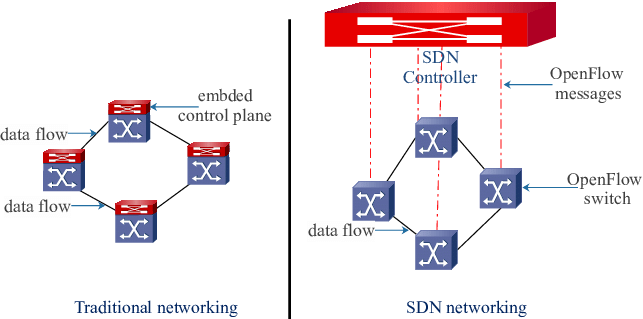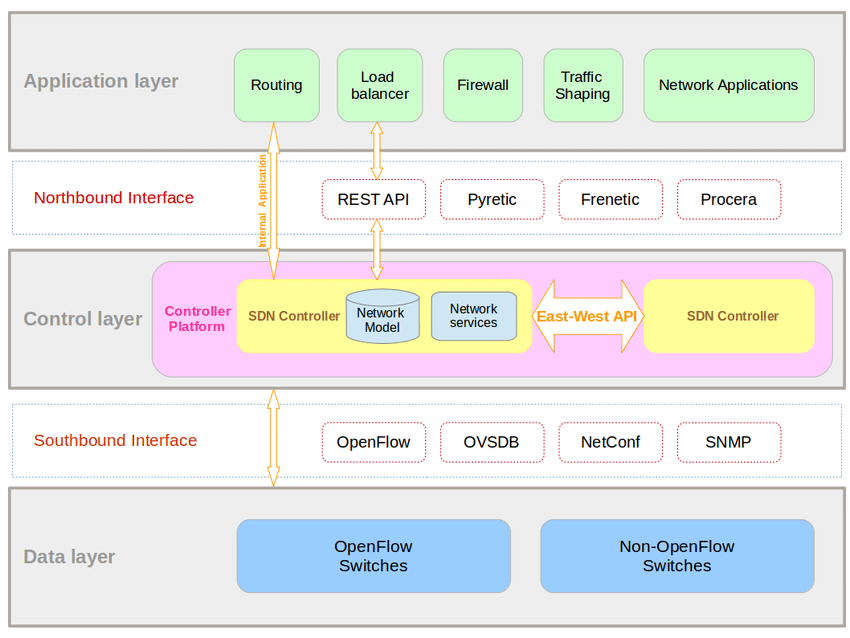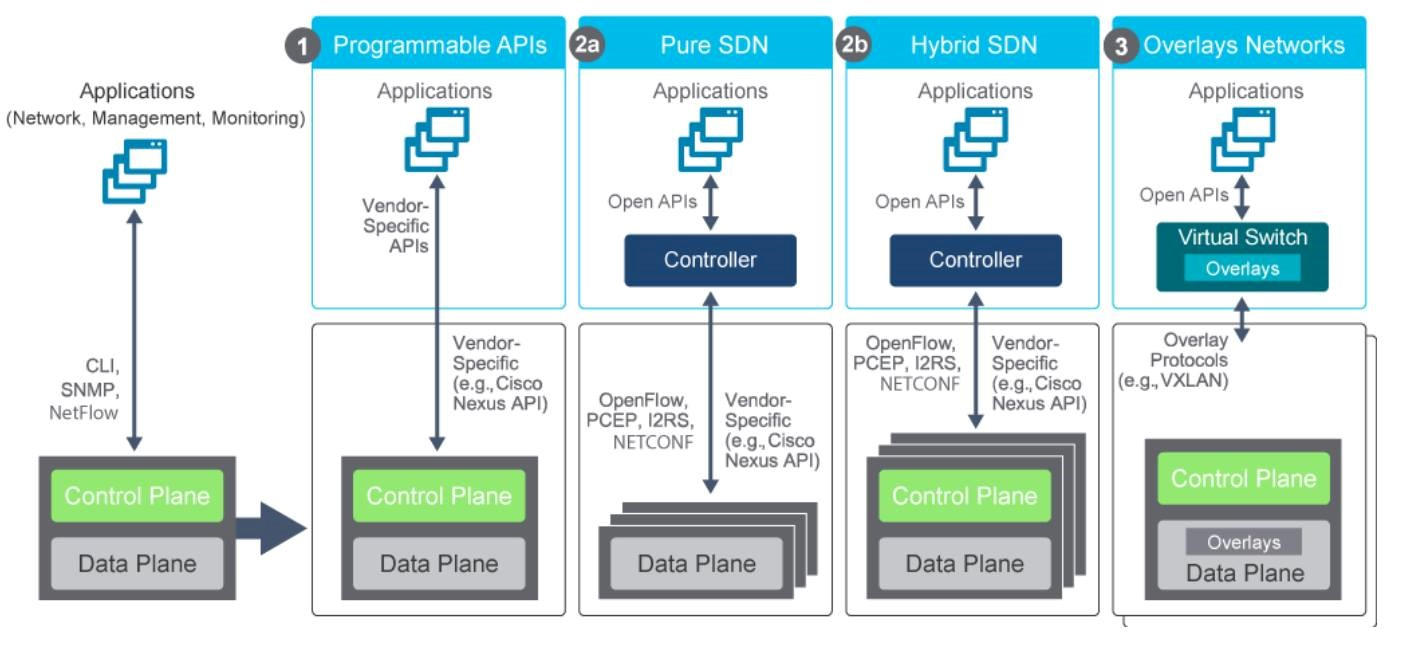SDN: From ideal to reality


SDN is more than 10 years old. As soon as it came out, its concept of separation of control plane and data plane aroused great attention and research upsurge in the network industry. Today, the halo of SDN is no longer there. Some people say, "SDN is dead, and something will burn paper." What is SDN? How exactly is SDN at the moment? What is the gap between the ideal and reality of SDN?
The growth of virtualization has led to significant changes in network traffic, especially data center traffic. The three-tier network architecture of Core/Distribution/Access is very effective in the traditional Client-Server network architecture. However, nowadays, the north-south traffic from users to the server is much lower than the east-west traffic from the server to the server. When the east-west traffic increases sharply, the three Layer network architecture begins to become inadequate.
At the same time, the traditional network system also exposes many limitations - the system is too complex and cannot flexibly respond to changes according to the business needs of the enterprise. Therefore, rapid deployment, flexible scalability, automation and ease of integration are key attributes that the network must meet.
Market demand has spawned a new trend in the networking industry: SDN (Software Defined Networking)!
SDN: From inspiration to essence
According to ONF (Open Networking Foundation), SDN is a network architecture with separate and programmable control plane and data plane.
What are the control plane and data plane? For example, we know the route from home to work, and we can go without navigation because we have data and decisions ahead of time. But how do you plan a route from home to Company A, where an unfamiliar customer is located? We need to think, find and choose the correct path. The calculation and decision-making path is equivalent to using the control plane in the network language; and from home to the company, there is no need for calculation and decision-making, just start directly, which is equivalent to the data plane. deal with.
The same is true for network systems. To transfer data from point A to point B, each network device must contain both the computing function (i.e. the control plane) and the data transfer function (i.e. the data plane). In an SDN network, the control plane is separated from the devices and centralized in a place called the SDN controller (essentially software programmed to control the network). There are hundreds of devices in the network system, but only one controller is needed to calculate and make decisions, and the devices only transmit data through the instructions of the controller.

In terms of architecture, SDN is divided into three layers. The infrastructure layer includes all network devices that have data forwarding capabilities (ie, data plane execution). The SDN control layer contains one or more controllers responsible for managing and controlling the packet forwarding of the underlying network devices, and the two layers communicate using a southbound interface such as OpenFlow. The top layer is the application layer, including applications and services (such as flow control, security, QoS, etc.), which directly interact with the control layer through the northbound interface.

With the above network architecture, SDN network has brought many changes:
First, separating the control and data planes helps create a "big picture" of the entire network, improving visibility and policy consistency. In theory, if the device only performs data plane tasks, it will simplify the design and greatly reduce the cost of hardware production, because the device itself does not need to run too many protocols, and only needs to execute commands from the controller. Most importantly, this separation allows for better abstraction of network systems.
"Abstract" is a very important feature in SDN network. Today's networks are becoming more and more simple and automated, for which the network system must be abstracted. With a layered network architecture, network administrators can program network systems as needed, pushing down the underlying implementation without needing to interact with hundreds of devices, thousands of lines of code, and complex protocols.
From a centralized control plane to create a "big picture" of the entire network, to inter-layer communication through APIs, all network elements in SDN support custom programming. This combination helps network administrators to increase the automation of their network, applications, network services can run in real time. Network systems are fully customizable and optimized for desired characteristics, independent of device manufacturers.
SDN: From ideal to reality
There are many differences between the ideal and reality of SDN. Compared with the definition and research of SDN, there are many differences in the actual product of SDN. For actual SDN products, is the control plane and data plane really separate? Will these devices be manufactured independently and not dependent on suppliers? Is Openflow a popular communication protocol?
SDN is constantly evolving, and the network architecture is also very diverse:

The SDN network architecture mentioned above is the architecture (2a) above, and the control plane and data plane are completely separated. Routing protocols or MAC learning mechanisms such as OSPF and BGP are concentrated in the controller, and the device is only the physical part that implements data forwarding, which is considered to be the original SDN architecture.
However, this architecture is likely to exist mostly in research labs and some experimental products. Real implementation into commercial SDN products is different. For example, SD-WAN uses architecture (2b), where the components that control the entire network are centralized on the controller, but the control plane remains on the devices so that the devices can operate relatively independently. Even, although some solutions are called SDN, in fact, the control plane is completely on the device, and the controller only tends to centrally manage the entire network to support communication with the application layer and users.
Architecture (3) in the figure shows an SDN-based overlay architecture that is part of many software-defined products on the market today. Overlay networks are designed to build connected logical networks on top of physical infrastructure using network virtualization.
From the concept of SDN, the solution products provided in the market are very diverse, which are called SDX (software-defined xx). Because SDN is not a product, it is an architecture, an idea, and the final product depends on the purpose of the build and the specific solution.
For example, SDN can be used for network traffic scheduling. Usually, the path selection of traditional networks is based on the "optimal" path calculated by routing protocols, but the result may cause traffic congestion on the "optimal" path and other non-optimal paths to be idle. When the SDN network architecture is adopted, the SDN with "global vision" can intelligently adjust the network traffic path according to the network traffic status, and improve the network utilization rate. SD-WAN is a good example.
For the virtualization of network functions, including the virtualization of physical network infrastructure in multi-tenant environments, SDN facilitates the creation of virtual networks in the data center, providing rapid provisioning for infrastructure layers and applications.
It can be seen from this that from the perspective of the SDN network, it can be developed into different products and solutions to overcome many problems that are impossible or difficult to solve with traditional networks.
SDN (or rather the idea of SDN) will continue to be applied and developed, leading to more diverse and improved products in the future. I hope that through this article, interested readers can better grasp the market trend, understand the essence of SDN network and its application in practice.